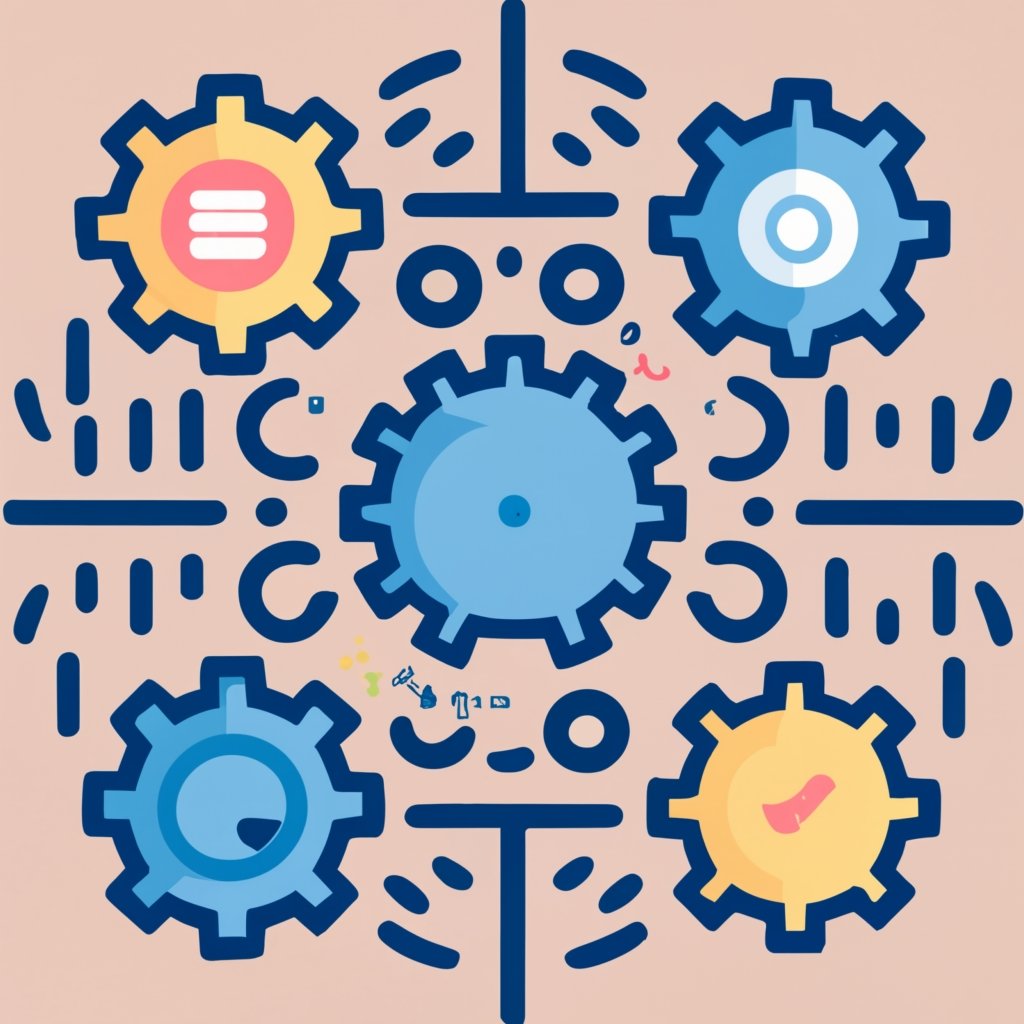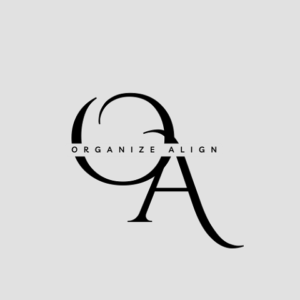Table of Contents
The OKR framework is a popular goal-setting methodology that has gained traction in recent years. OKR stands for Objectives and Key Results, and it is a simple yet effective system that helps businesses and individuals set and achieve their goals. The framework was first introduced by Andy Grove, the former CEO of Intel, and it has since been adopted by many successful companies such as Google, LinkedIn, and Twitter.
The OKR framework is designed to help organizations set and communicate their goals in a clear and concise manner. Objectives are the desired outcomes, and they should be specific, measurable, and time-bound. Key Results are the metrics that will be used to measure progress towards the objectives. They should be quantifiable and challenging but achievable.
Implementing the OKR framework can be challenging, but it has many benefits. It helps to align everyone in the organization towards a common goal, improves communication, and provides a clear roadmap for achieving success. In this article, we will explore the origin and evolution of the OKR framework, how it works, and how it can be implemented in business. We will also answer some frequently asked questions about the framework.
Key Takeaways
- The OKR framework is a goal-setting methodology that helps businesses and individuals set and achieve their goals.
- Objectives and Key Results are the two main components of the framework.
- Implementing the OKR framework can help align everyone in the organization towards a common goal, improve communication, and provide a clear roadmap for achieving success.

The Origin and Evolution of OKR Framework
The OKR (Objectives and Key Results) framework is a goal-setting methodology that has gained popularity in recent years. The origin of the OKR framework can be traced back to Intel, where it was first introduced by Andy Grove in the 1970s. Grove was the CEO of Intel at the time and wanted a way to align the company’s goals with its employees’ objectives.
The OKR framework was initially known as “Intel Management by Objectives” and was designed to help Intel’s employees set specific, measurable, achievable, relevant, and time-bound (SMART) goals. The framework was later refined and renamed to “Objectives and Key Results” by John Doerr, who was an early investor in Google and a former Intel employee.
Doerr introduced the OKR framework to Google in 1999, and it quickly became a fundamental part of the company’s culture. Google’s adoption of the OKR framework helped popularize it and led to its widespread use in other companies.
The OKR framework has evolved over the years, with many companies customizing it to suit their specific needs. However, the basic principles of the framework remain the same. The framework emphasizes setting ambitious and measurable goals and tracking progress towards achieving them.
One of the key benefits of the OKR framework is that it helps align individual and team goals with the company’s overall objectives. This alignment ensures that everyone is working towards the same goals and helps increase employee engagement and motivation.
Overall, the OKR framework has a rich history and has proven to be an effective goal-setting methodology for many companies. Its evolution over the years has led to its widespread adoption and continued use in organizations of all sizes.
Understanding the OKR Framework
OKR stands for Objectives and Key Results. It is a goal-setting framework that helps companies set and achieve ambitious goals. The OKR framework is designed to create focus, alignment, and engagement across the organization.
At its core, the OKR framework is about setting specific, measurable goals that align with the company’s overall strategy. The goals are aspirational and designed to stretch the team to achieve more than they thought possible.
The OKR framework is a collaborative process that involves setting goals at the team level and aligning them with the company’s high-level objectives. The framework helps to create clarity and transparency around what the team is working on and why it matters.
The OKR framework is based on the principle of measuring what matters. It focuses on outcomes rather than tasks, and it encourages teams to set measurable goals that can be tracked and evaluated over time. This approach helps to create a culture of continuous improvement where teams are always striving to achieve more and deliver better results.
The OKR framework is a management methodology that provides tools for communication, goal-setting, and product management. It is typically used on a quarterly basis to set and track progress towards goals. The framework encourages ambitious goals that are committed or aspirational and align with the company’s strategic priorities.
The OKR framework is a goal-setting methodology that helps companies set and achieve measurable outcomes. It is a collaborative process that creates focus, alignment, and engagement across the organization. The framework encourages ambitious goals that are committed or aspirational and align with the company’s strategic priorities.

Implementing OKR in Business
Implementing the OKR framework in business can be a challenging process that requires careful planning and execution. The following paragraphs will provide an overview of the steps involved in implementing OKRs, as well as some best practices to ensure success.
Planning and Goal Setting
The first step in implementing OKRs is to identify the company’s goals and objectives. This involves setting specific, measurable, achievable, relevant, and time-bound (SMART) goals that align with the company’s overall vision and mission. Once the company’s goals have been identified, they can be broken down into smaller, more manageable objectives that can be assigned to teams and individuals.
Defining Key Performance Indicators (KPIs)
To track progress towards achieving the company’s goals and objectives, it is essential to define relevant KPIs. KPIs should be specific, measurable, and aligned with the company’s goals. They should also be regularly reviewed and updated to ensure they remain relevant and effective.
Management by Objectives (MBO)
Management by objectives (MBO) is a management model that involves setting specific objectives for employees and then monitoring their progress towards achieving those objectives. OKRs can be used as part of an MBO system to help employees focus on achieving specific goals and objectives that align with the company’s overall vision and mission.
Employee Engagement
Implementing OKRs can help increase employee engagement by providing employees with a clear understanding of the company’s goals and objectives. When employees understand how their work contributes to the company’s overall success, they are more likely to be motivated and engaged.
Tracking Progress
To ensure that the company is making progress towards achieving its goals and objectives, it is essential to track progress regularly. OKRs should be reviewed on a quarterly basis to determine whether progress is being made and whether any adjustments need to be made to the company’s strategy.
Stretch Goals and Learning
Stretch goals are ambitious goals that are designed to push employees to achieve more than they would under normal circumstances. Implementing stretch goals as part of an OKR system can help employees develop new skills and achieve personal growth.
Accountability
OKRs can help increase accountability by providing a clear framework for measuring progress towards achieving the company’s goals and objectives. When employees know what is expected of them and how their performance will be evaluated, they are more likely to take ownership of their work and be accountable for their results.
Collaborative Approach
Implementing OKRs requires a collaborative approach that involves all levels of the organization. Executives, managers, and employees should work together to develop OKRs that align with the company’s overall vision and mission. This collaborative approach can help ensure that everyone is working towards the same goals and objectives.
Business Outcomes and Success Criteria
OKRs should be designed to achieve specific business outcomes, such as increased revenue, customer satisfaction, or employee engagement. Success criteria should be identified for each objective to ensure that progress can be tracked and evaluated effectively.
Strategic Alignment
OKRs should be aligned with the company’s overall strategy to ensure that everyone is working towards the same goals and objectives. This strategic alignment can help ensure that the company is making progress towards achieving its long-term goals and objectives.
In summary, implementing OKRs in business requires careful planning and execution. By following best practices and focusing on key areas such as planning and goal setting, defining KPIs, tracking progress, and fostering employee engagement, companies can successfully implement the OKR framework and achieve their goals and objectives.

OKR Framework in Practice
The OKR framework is a collaborative process that aims to align individual contributors with company goals. It is a tool used by businesses to set ambitious goals that can be achieved on a quarterly basis. The OKR framework is used by many successful companies, such as Allbirds, to define priorities and track progress towards business outcomes.
OKRs are typically set on a quarterly basis and consist of two parts: objectives and key results. Objectives are aspirational and should be aligned with company goals. Key results are specific and measurable leading indicators of success criteria. The OKR framework is a committed or aspirational goal-setting approach that is used to drive focus, alignment, and engagement.
The OKR framework is a collaborative process that requires effective communication between teams and individuals. It is important to involve all stakeholders, including the CEO, product management, and customers, to ensure that OKRs are aligned with business priorities and customer satisfaction.
The OKR framework can be used to track delivery and customer churn, as well as to set ambitious goals for marketing and other team-specific OKR examples. It is also a useful tool to help individuals set personal goals in their personal life.
To successfully implement the OKR framework, it is important to have the right tools and processes in place. This includes regular check-ins and progress updates, as well as the use of leading indicators to track success. The OKR framework should be a collaborative process that involves all stakeholders and is used to drive focus, alignment, and engagement towards company goals.
To Set Up A Cadence For the OKR Framework
The OKR framework encourages organizations to set goals that are ambitious and may feel somewhat uncomfortable. The idea is that by stretching to meet these challenging goals, even if you don’t fully achieve them, you’ll likely reach greater achievements than you would have with more modest goals.
OKRs are typically set at multiple levels within an organization:
- Company-level OKRs: Broad goals set by leadership to move the company forward.
- Team-level OKRs: More specific goals that align with company OKRs.
- Personal OKRs: Goals that individuals set to contribute to their team and company OKRs.
At the end of each period (usually a quarter), OKRs are reviewed to see what was achieved and what wasn’t. This reflection phase is crucial for learning and adjusting strategies and objectives moving forward.
OKRs are meant to be transparent across the organization to ensure alignment and to enable everyone to see what others are working on. This transparency helps with collaboration and avoids duplication of effort.
The check-in process for OKRs (Objectives and Key Results) typically involves regular status updates and reflections on progress, which help ensure that the objectives are on track to be met. Here’s how a typical OKR check-in process might look:
- Frequency of Check-Ins: Check-ins on OKRs usually occur weekly or bi-weekly, depending on the organization’s preference and the nature of the objectives. These check-ins allow teams and individuals to monitor their progress and make adjustments as necessary.
- Format of Check-Ins: During a check-in, teams typically discuss each Key Result, evaluating the current progress with data and metrics. This can take the form of a meeting, a written report, or updates in a shared OKR tracking tool.
- Progress Rating: Often, progress on Key Results is rated using a simple scale, such as 0-1.0, where 1.0 indicates the Key Result has been fully achieved. Another common method is using a traffic light system (red, yellow, green) to quickly signal status.
- Challenges and Blockers: Check-ins are an opportunity to discuss any challenges or blockers that are preventing progress on Key Results. This is crucial for identifying problems early and collaboratively finding solutions.
- Adjustments and Pivots: Based on the check-in discussions, teams may decide to adjust their strategies or pivot their approach to better align with their Key Results.
- Learning and Reflection: Check-ins often include a reflection component where teams discuss what is working, what isn’t, and what can be learned from both successes and failures.
- Documentation: It’s important to document the outcomes of check-ins, including any decisions made or actions taken, so there is a record that can be referenced later.
- Alignment: Check-ins also serve to ensure that individual OKRs remain aligned with team OKRs, and team OKRs with company OKRs. This helps maintain focus on the organization’s most important goals.
- Transparency and Communication: To foster transparency, updates from check-ins are often shared within the organization. This can be done through internal communication tools, email updates, or shared documents.
Regular check-ins are a core part of the OKR framework because they keep the focus on measurable outcomes and create accountability. They also promote continuous feedback and adaptation, which are key to the agile mindset often associated with OKR-driven organizations.
Frequently Asked Questions
How do OKRs differ from SMART goals?
The OKR framework is similar to the SMART (Specific, Measurable, Achievable, Relevant, Time-bound) goal-setting method, but with some key differences. While SMART goals are typically focused on individual performance, OKRs are designed to align individual, team, and company goals with a larger mission. Additionally, OKRs are designed to be more ambitious than traditional SMART goals, with a focus on stretch goals that push teams to achieve more than they might have thought possible.
What are some examples of key objectives in the OKR framework?
Examples of key objectives in the OKR framework might include increasing revenue by a certain percentage, improving customer satisfaction ratings, or launching a new product or service. Objectives should be specific, measurable, and aligned with the company mission. Key results are the specific metrics used to track progress towards these objectives.
What is the methodology behind OKRs?
The OKR methodology is designed to promote focus, alignment, and engagement across an organization. It involves setting clear, ambitious objectives that are aligned with the company mission, and tracking progress towards those objectives using specific, measurable key results. OKRs are typically set on a quarterly basis and are reviewed regularly to ensure progress is being made.
What are the four levels of the OKR framework?
The OKR framework consists of four levels: company, team, individual, and stretch. Company-level OKRs are designed to align individual and team goals with the larger company mission. Team-level OKRs are designed to align individual goals with team goals. Individual-level OKRs are designed to align personal goals with team goals. Stretch goals are designed to push teams to achieve more than they might have thought possible.
What are some popular OKR tools and software?
There are a number of popular OKR tools and software available, including Asana, OKR software, and WorkBoard. These tools can help teams set and track OKRs, align individual and team goals, and monitor progress towards objectives.
How has Google implemented the OKR framework in their business strategy?
Google is one of the most well-known companies to have implemented the OKR framework in their business strategy. They use OKRs to align individual, team, and company goals with their larger mission, and have found that the framework helps to promote focus, alignment, and engagement across the organization. Google’s OKRs are set on a quarterly basis and are reviewed regularly to ensure progress is being made towards objectives.
Recent Posts
Understanding Time Feature ReleaseConcept of Time in Product RoadmapsImportance of Timing for Feature ReleasesPlanning the RoadmapSetting Strategic GoalsIdentifying Key MilestonesPrioritizing...
Portfolio Kanban: A Powerful Tool for Effective Portfolio Planning
Fundamentals of Portfolio KanbanDefining Portfolio KanbanKey Principles of Portfolio PlanningBenefits of Portfolio KanbanSetting Up a Portfolio Kanban SystemIdentifying Portfolio ItemsVisualizing the...

